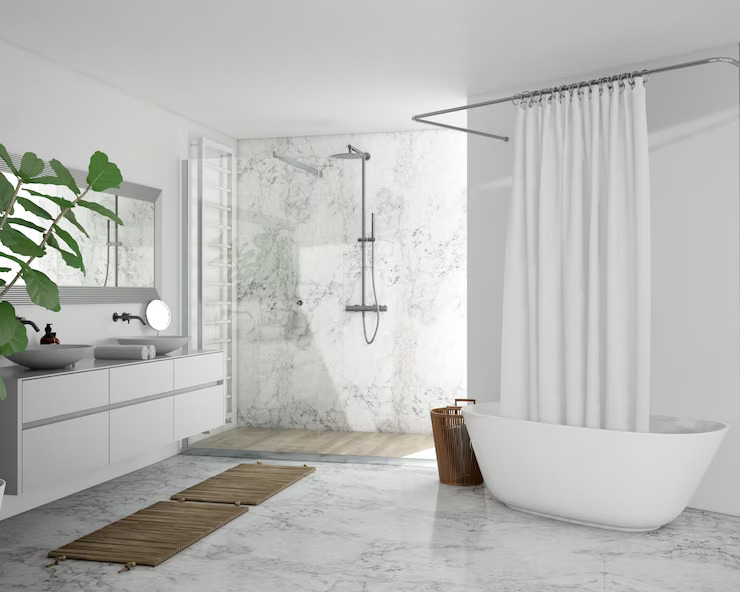Intro
Choosing bathroom tiles for your home renovation or new construction project may seem overwhelming given the multitude of options on the market today. Ceramic, porcelain, and glass tiles are three of the most popular types of bathroom tiles, each with their own set of advantages and considerations. This article will provide an in-depth overview of key differences between ceramic, porcelain, and glass bathroom tiles to help you determine which is best for your needs and space.
Ceramic tiles:
Ceramic tiles have been used to finish bathrooms for many decades. Made from natural clays, ceramics can be formed into a vast array of colors, shapes, sizes, and textures. Glazes are applied to ceramic tiles to create their surface appearance. Some key benefits of ceramic bathroom tiles are that they are budget-friendly, easy to cut and install, and versatile in style. Simple ceramic tiles start at just a few dollars per square foot. In addition, the variety of looks range from basic white subway tile to vivid patterned mosaics. Ceramic tiles are relatively soft, so they can scratch and chip over time, especially on floors. The porous nature of ceramic also means sealing is required to prevent staining and discoloration from water exposure. But with proper care and maintenance, ceramic bathroom tiles can provide timeless beauty on a modest budget.
Porcelain tiles:
Porcelain tile has surged in popularity for bathrooms in recent years. Made from extremely finely ground clay, porcelain tiles are fired at very high temperatures that result in a dense, impervious product. Porcelain offers superior durability, stain-resistance, and water-resistance compared to ceramic. The refined clay composition makes the tiles very hard and dense, so they resist chipping and absorption. Glazes can be applied to achieve a wide selection of porcelain tile styles. A few downsides are that porcelain tiles are generally more expensive than ceramic, and the denseness makes cutting more difficult. Cuts must be done slowly with a wet saw. But for unmatched elegance and longevity, porcelain bathroom tiles are worth the investment.
Glass tiles:
Glass bathroom tiles impart a contemporary, sleek aesthetic. They contain recycled glass combined with pigments for color and resin agents as bonding. The glass is formed into tiles and fired. The resulting product has an eye-catching, glittery appearance. Glass tiles are impervious to water, making them a great option for showers, steam showers, and other high-splash areas. They won’t absorb moisture or harbor mold growth. Glass bathroom tiles are also scratch-resistant and easy to keep clean. On the downside, glass can chip if hit hard and patterns/colors are not as abundant as ceramic or porcelain. For making a bold, modern design statement, glass bathroom tiles can be the perfect choice.
Conclusion paragraph:
When selecting new bathroom tiles, carefully weigh the pros and cons of ceramic, porcelain, and glass types. Budget, color/style preferences, and goals for longevity and water-resistance should all factor into your decision. You may also want to mix materials, using glass or porcelain tiles on shower walls and ceramic on floors. With a bit of planning and creativity, you can pick the ideal bathroom tiles to match your vision, needs, and budget. And be sure to purchase a few extra tiles for future replacements or repairs. Your new bathroom tiles will provide enjoyment for years to come.




